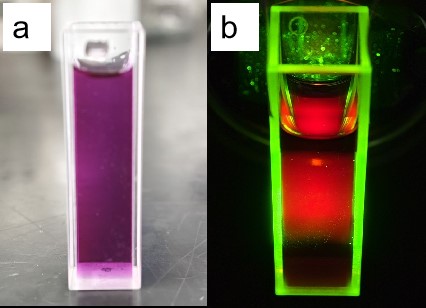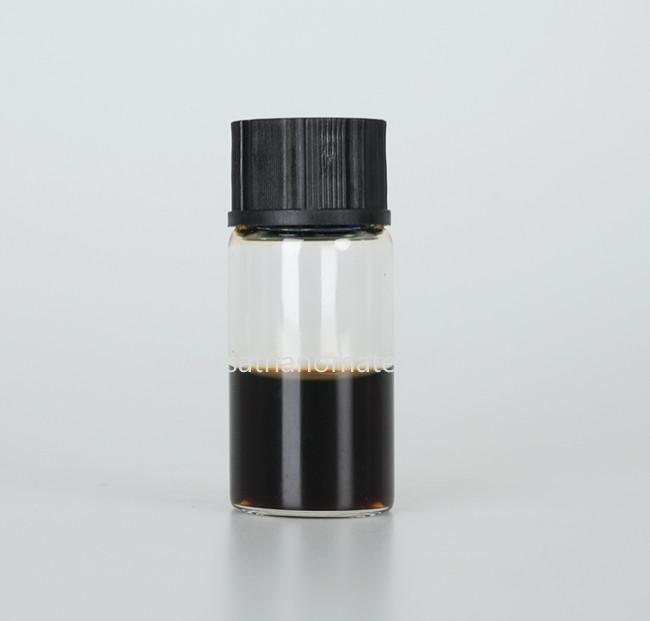The synthesis of carbon quantum dots can be mainly divided into two categories: top-down method and bottom-up method. Through the pre-treatment, preparation, and subsequent processing, carbon quantum dots can be controlled in size, passivated on the surface, doped with heteroatoms, and nanocomposites to meet the requirements.

Top-down approach
Top down method: laser ablation method, electrochemical method, arc discharge method.
arc discharge
Dr. Xu synthesized blue and yellow fluorescent carbon nanoparticles using carbon ash as a carbon source using arc discharge method. Bottini et al. synthesized yellow green fluorescent carbon quantum dots using single-walled carbon nanotubes as carbon sources. Sun et al. prepared carbon quantum dots with nanocomposite particle sizes smaller than 10 nm, which can be used for photoelectric conversion.
The arc discharge method has a relatively low yield, complex purification, difficult product collection, high oxygen content, and does not require surface modification. Its luminescence mechanism can be similar to that of carbon nanotubes.
Laser ablation method
Dr. Sun prepared fluorescent carbon quantum dots using carbon as the target through laser ablation.
Dr. Hu synthesized carbon quantum dots with simultaneous surface functionalization using laser ablation method in one step.
The laser ablation method requires expensive instruments and the addition of organic solvents to alter the surface state in order to produce fluorescent carbon quantum dots.
Electrochemical method
Electrochemical oxidation method refers to the method of preparing carbon quantum dots by oxidizing carbon source W using electrochemical methods. Zhou et al. obtained carbon quantum dots by electrochemical oxidation of multi walled carbon nanotubes (MwCNTs).
Electrochemical methods have unique advantages in surface structure analysis and luminescence mechanism research, including low material cost, mild conditions, simple post-treatment.
Bottom-up approach
Bottom up method: Organic carbonization method, microwave method, hydrothermal method, combustion method, ultrasonic treatment method, etc.
Organic carbonization method
Organic carbonization method: Carbon quantum dots capable of emitting fluorescence can be obtained by carbonizing organic precursors, and water-soluble/oil soluble carbon quantum dots with surface functionalization can be prepared. Organic carbonization methods can be divided into two categories: heating carbonization and acid dehydration carbonization. This method can change the performance of carbon quantum dots by selecting different carbonization precursors or different surface coating agents
Microwave method
Microwave refers to electromagnetic waves with a wavelength frequency between 300 MHz and 300 GHz. The characteristics of microwave are energy concentration, uniformity, high efficiency, and short reaction time. Different carbon sources such as sucrose, graphite oxide (GO), glucose, chitosan, polyethylene glycol, dimethylformamide (DMF), etc. can be selected to prepare corresponding carbon quantum dots.
Hydrothermal method
Synthesize substances in a reactor using water as a solvent under high temperature and pressure conditions. Its extension method is solvothermal method using organic solvents. The hydrothermal preparation process is relatively simple and easy to control. Simultaneously reacting in a confined space can prevent the volatilization of organic matter. The properties of carbon quantum dots produced vary depending on the solvent used.
Combustion method
The process of preparing carbon quantum dots by combustion method is simple to operate, requires low equipment requirements, and has strong repeatability, but the particle size distribution of the product is difficult to control.
Ultrasonic treatment method
Dr. Li added activated carbon to hydrogen peroxide water to form a black suspension. The suspension diluted by ultrasound treatment at room temperature is then vacuum dialyzed using a cellulose membrane to remove non fluorescent substances. Functionalized carbon nanoparticles (FCNPs) obtained after filtration. The ultrasonic treatment method for preparing carbon quantum dots requires low equipment requirements, simple operation, low cost, high yield, and low energy consumption.
For application or mechanism research, it is necessary to control the size of carbon quantum dots. Currently, the common method is to prepare carbon quantum dots in nanoreactors. The organic starting material is absorbed into a porous nanoreactor through capillary forces, and the organic starting material is cracked in the nanoreactor to remove the nanoreactor and obtain carbon quantum dots.
Surface passivation and functionalization
The quantum efficiency of carbon quantum dots without surface passivation is usually very low. In order to meet specific application needs, people passivate and functionalize carbon quantum dots through covalent binding, coordination, π - π interaction, sol gel interaction and other ways. Functionalization of carbon quantum dots can improve both their optical and physicochemical properties.
Heteroatom doping
Doping with heteroatoms is commonly used to regulate the luminescence of substances. Common heteroatoms include nitrogen (N), sulfur (S), phosphorus (P), silicon (Si), etc. Nitrogen (N) doping can significantly enhance photoluminescence, and the emission intensity is related to nitrogen content; Silicon (Si) doped carbon quantum dots can exhibit a specific response to H2O2.
Composite of carbon quantum dots
Carbon quantum dot composites can combine their fluorescence properties with the electrical, magnetic, optical and other properties of inorganic nanoparticles to meet the needs of different application fields. According to the properties of composite materials, they can be divided into two types: precious metal composites (such as Ag) and semiconductor composites (such as TiO2, Fe2O3, Cu2O, etc.).
The Application of Carbon Quantum Dots
Carbon quantum dots have many excellent properties such as strong photoluminescence, strong electron transfer ability, and good biocompatibility, and have enormous potential application value in fields such as biology, medicine, chemical engineering, and electronics

Bioimaging
The strong luminescence and good biological low toxicity of carbon quantum dots can be used to replace semiconductor quantum dots and organic dyes. Compared with traditional cell markers, their biggest advantage is multi-color luminescence, which is beneficial for researchers to control and select excitation and emission wavelengths according to different imaging needs. With the deepening of research, selective cell targeting of carbon quantum dots has broad application prospects in the field of biological imaging in the future.
Disease treatment
Carbon quantum dots can serve as photosensitizers for certain specific tumors, while carbon quantum dots clustered in specific areas can inhibit the growth of cancer cells through specific wavelength irradiation. Researchers also use it as a nanocarrier and tracker to monitor the delivery process of drugs or genes. By monitoring the fluorescence signal of carbon quantum dots, the delivery effect of drugs can be inferred, thereby optimizing the injection method and dosage of drugs.
Luminescent materials
Due to its excellent optoelectronic properties, carbon quantum dots can be used for photoelectric conversion. Mirtchev et al. prepared carbon quantum dot sensitized titanium dioxide solar cells.
Photocatalytic applications
The surface of carbon quantum dots has abundant functional groups and excellent electron transfer ability, which gives them excellent photocatalytic and electrochemical catalytic performance. Yu et al. prepared carbon quantum dots P25 TiO2 nanocomposites using a one-step hydrothermal method. Carbon quantum dots serve as electron storage pools and can effectively promote the catalytic hydrogen generation of P25 TiO2 under UV irradiation.
Chemical sensing
The low toxicity, biocompatibility, and photostability of carbon quantum dots can be used to detect molecules such as metal ions, metals, and anions.
Fluorescent ink
Carbon quantum dots can emit significant fluorescence under ultraviolet light irradiation and have strong photostability, making them used as fluorescent inks. Gao et al. printed colorless carbon quantum dots on Paper Cuttings for anti-counterfeiting ink and information encryption.
SAT NANO is one of the best supplier of CQD carbon quantum dots nanoparticle in China, if you have any interesting, please feel free to contact us at admin@satnano.com
 online service
online service 13929258449
13929258449 admin@satnano.com
admin@satnano.com + 8613929258449
+ 8613929258449